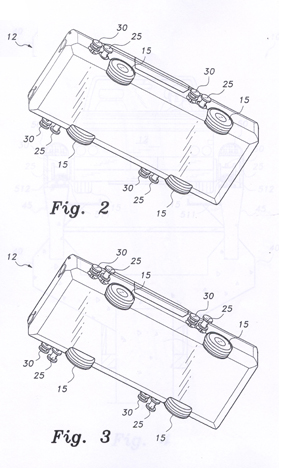Why
THE CURRENT SITUATION
- Ever increasing traffic congestion in urban and suburban areas
- Automobile travel, door to door, is the preferred, if flawed system
- Difficulty of integrating fully automated automobiles with manually driven ones
- Pollution from fuels, rubber tires, junked vehicles
- High cost of constructing new highways, disruption of communities, lost land
- Mass transit station-to-station generally requires transfers and is inefficient
- Expensive and dwindling petroleum resources
- Over forty thousand ground transportation deaths annually
Many automated vehicle systems have been proposed but most have required exclusive unique glideways which do not blend with the automobile. The bimodal vehicle can travel on both streets and glideways.
THE ADVANTAGES OF THE BiMODAL GLIDEWAY
Fast
- Fast Fully automated and fail safe
- Single lane operation at one optimum speed
- High speed rail system with banked turns and minimum elevation changes
- Electric rotary and/or linear electric motors
- Grade separated from all other forms of activity
- All entering and exiting traffic operates at glideway design speeds
- Increased traction from eight supporting wheels
- All transfers between glideways and streets performed at grade level
Safe
- Vehicle glideway functions separately from street system
- Riding between the rails with very low center of gravity
- Eight metal wheels and rails eliminates flats
- Automated electronic controls including electric emergency braking
- Vehicles ride between wide gauge tracks providing excellent stability
- No moving mechanical parts in track
- Interactive information exchange between vehicles and track
- No cross traffic
- Redundancy designed into all critical parts
- All weather operations except for earthquakes, fires, heavy storms
- Universal bimodal system design controlled by single agency
Economical
- Single lane, closely spaced, high single speed vehicles produces more efficient transport
- Mass production utilizing preformed glideway structures
- Existing railroad technology for laying track
- Glideway uses static vertical switching with no moving parts
- Grade separated and elevated in urban areas saving land use
- All electric power commercially supplied through the glideway
- BiModal Glideway vehicles priced competitively with conventional street automobiles
- All vehicles operate at specified speeds
- All glideway operation costs paid by users through electric billing
- Can actively support mail delivery, parcel post, industries
- Extremely cost benefit effective in terms lives, time, and dollars saved
- Reduces need for new freeways, airports, and trucks
- Supports and augments all other form of transportation
- Can perform automated functions i.e., parking, delivery, etc.
- No crossing situations requiring controls, e.g. traffic lights
- No street signs traffic controls, striping special police, parkways required
- Commercial bimodals relieve highways of much truck and bus traffic
- Supplement conventional mass transit
Green
- Non-polluting transportation
- Minimal land disruption
- No rubber tire pollution from glideway mode
- Minimize fossil fuel importation by reducing air, truck, automobile traffic
- Reduces life threatening accidents
- Replace or supplement three lane highway with a single lane glideway

From patent: Bottom view of vehicle with switching wheels (25) set for different operations.